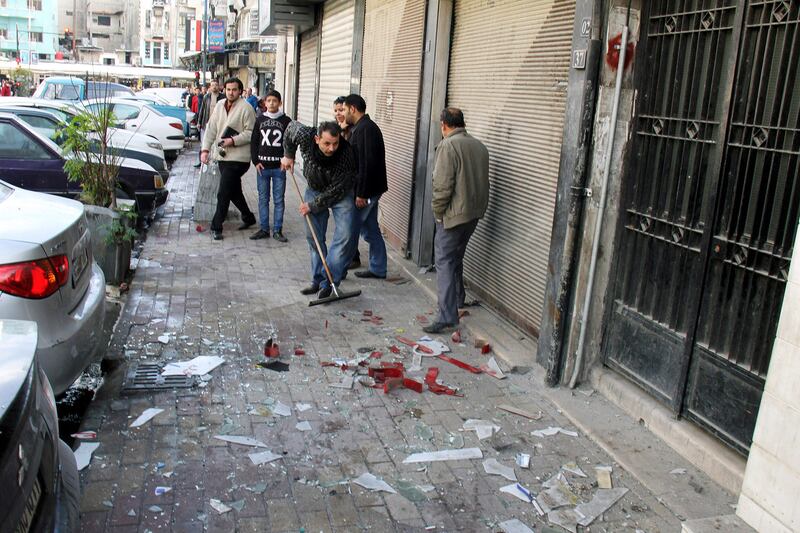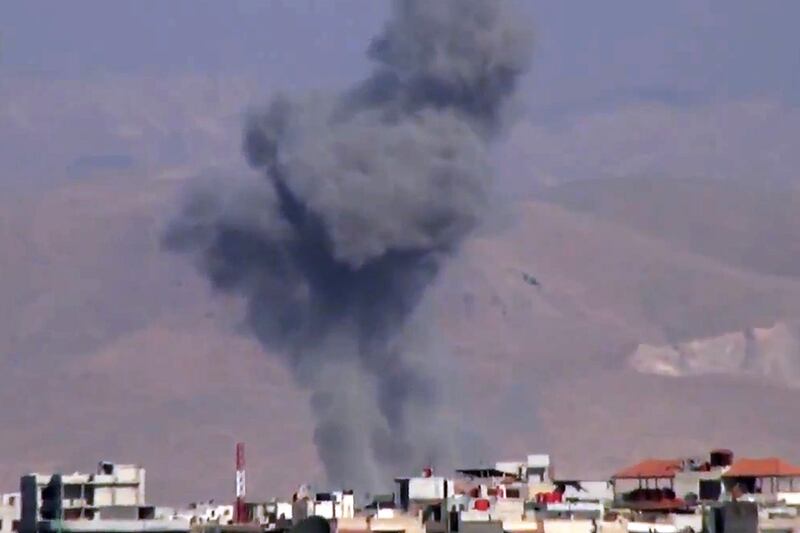Once a hub of Middle East commerce, Damascus is short on food. With antigovernment forces closing in on the center of the Syrian capital, supplies are dwindling for those trapped between those defending Bashar al-Assad’s regime and those attempting to topple it.

At Samir al-Aid’s bread shop in Damascus’s western Mezzah neighborhood, bakers have been working double shifts and on holy Fridays to boost production from 15 to 20 tons a day. Even with the increased supply, people line up around blocks for about three hours for the daily ration of three pounds per person. The Syrian Arab Red Crescent recently estimated that 2.5 million people have been displaced within the country.
“A lot of people came to Damascus looking for safety,” al-Aid said as he attended the front of the line. His Soviet-style bakery dates to the 1970s, and the walls are littered with slogans from former dictator Hafez al-Assad, Bashar’s father. “We probably have enough flour and fuel to make bread for another 15 days.”Assad’s territory appears to be growing smaller, and the siege-like environment has cut supplies to the center of the capital. Prices are spiking, but the government continues to subsidize goods such as rice, sugar, and bread, the latter costing around 15 cents per ration.
Syria is about to mark the two-year anniversary of its rebellion, inspired by the Arab Spring revolts in Tunisia, Egypt, Libya, Bahrain, and Yemen, and driven by the Sunni Muslims living in the countryside. Since the elder Assad took power in 1970, his minority Alawi clan—a branch of Shiite Islam—has ruled Syria and its 90-percent- Sunni population. The latter, mainly working-class people, have expelled government forces and turned their towns and neighborhoods into what they call “free areas.”
“Everything outside of the capital is ghost towns,” said Abu Hussan, who fled with his three sons from their home outside Damascus to a hotel downtown. “The majority of civilians have left and those who remain are fighters with the Free Syrian Army, controlling Duma, Harasta, Saqba, and Arbin [four outlying areas to the north and east of downtown Damascus]. The Syrian Army no longer sends troops to fight, they just bomb from the air and try to control the main highways.”
Abu Hassan said he is trying to take his family to Lebanon by road, the only relatively safe route out of Damascus. The road to Jordan is an option, but it is considered safe only before 3 p.m.. The Assad regime contends that the airport is also open, but the constant battles on the 13 miles of road between downtown Damascus and the airport keep most people away.
Bread is not the only problem for Syrians in the capital. Fuel for cars, radiators, and cooking has become a luxury item due to the international blockade and the continuous sabotage of pipelines that link the oil fields in the eastern deserts with refineries in Homs and Banias to the north of Damascus. In the past week, a gallon of gasoline has risen from $1.6 to $2. Hours waiting in line will get some gasoline into a car, but finding fuel for home heaters is nearly impossible without knowing someone on the black market. Iran, Russia, and Algeria are the only three countries that continue selling oil to Syria.
To make matters worse, the city experiences power cuts that last for hours, but often longer. “It’s not like before, when the power went off at a certain time each day,” said Fady, who runs a barber shop in the Christian side of the Old City. “Now we sometimes go the entire day without power and no one takes responsibility. They blame the FSA, saying they attacked some power plant and leave it at that.”

Like most of the business owners in Damascus, Fady depends on a generator. In the past week, the cost of one has doubled to around $60 for the less expensive, Chinese-made brand. The generators’ collective buzz fills the streets.
The outskirts of Damascus are the safest areas at the moment, and those who can’t afford to leave the country look for shelter there. Around 17 schools act as shelters for the displaced, although the majority are living with relatives and friends. Television and Internet still function, so information on hot spots around Syria flows freely. This keeps people safe but also serves as a constant reminder of the destruction taking place every day.
“The government can’t protect people, all that’s left in their control is western Damascus, nothing more,” said a man who only identified himself as a pharmaceutical manufacturer. “We live day-to-day, we can’t plan for anything, and we’ve used all the supplies we had stored. This revolt has destroyed the country. What will come of us tomorrow?”






